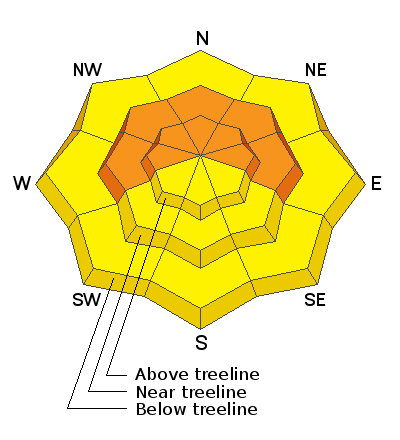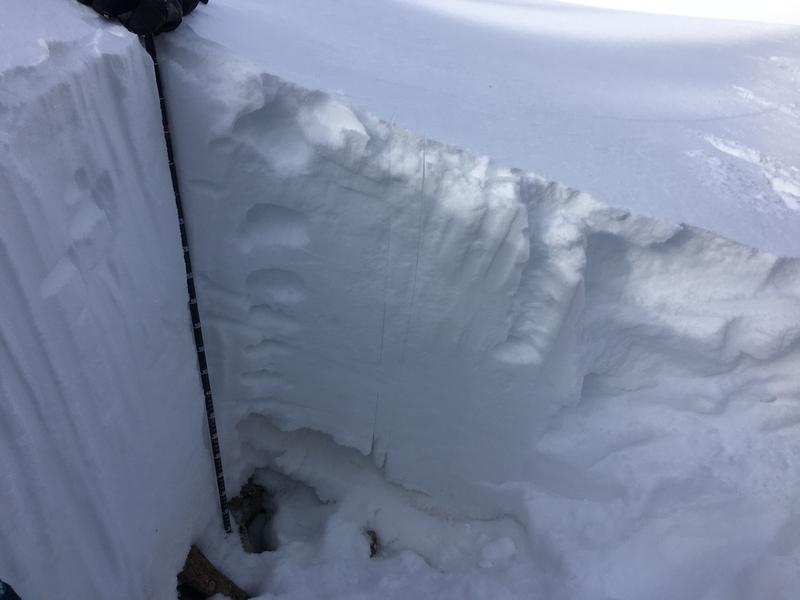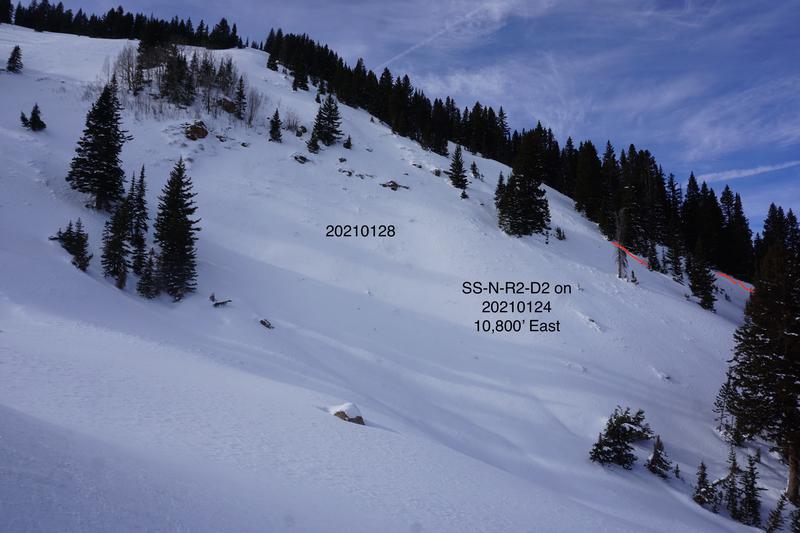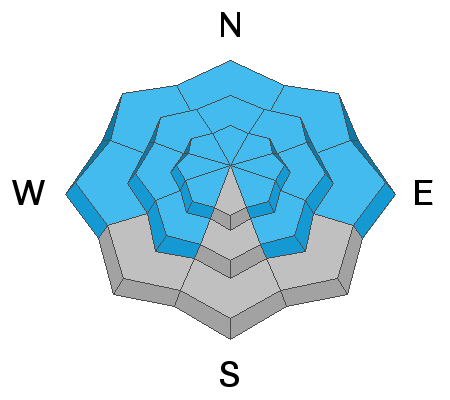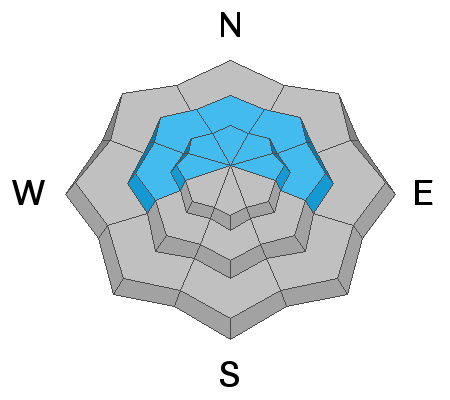The Geyser Pass Road is plowed with a snow-packed surface.
The Lower Utah Nordic Alliance (LUNA) groomed all trails on Wednesday. Follow LUNA on Instagram @luna_moab.
24 Hour Snow 0" 72 Hour Snow 3" Base Depth in Gold Basin 39" Wind SE 35 G55 Temp 27F
Yesterday, southerly winds blew in the 25-35 mph range for most of the day. While these winds were consistent, there was not much snow to transport and the forecasted winds failed to materialize. Today, southwest flow overhead will strengthen, driving the deep pacific trough into our area. Look for increasing clouds throughout the day and high temps near 30F. Southwesterly winds will continue to increase, ranging from 30 to 40 mph with gusts to around 50 mph. Isolated rain and snow showers could occur by midday, but the main pulse will occur tonight, with ensemble models estimating 3-5" of snow for the La Sal and Abajo Mountains.
Snowpack Discussion
In our travels yesterday, the impacts of Wednesday's wind event were evident. In areas below treeline, last weekend's storm snow is less wind-affected. Breaking trail in this soft and somewhat bottomless snow produced 10-20' shooting cracks, and one small test slope (east aspect) produced a soft slab at the new snow/old snow interface. Near treeline, depth is variable and much of the snow has been stiffened by the wind. In these areas, the snow is more supportive and we experienced less cracking and collapsing than we had expected. In areas that have wind-drifted snow, the snowpack is considerably deeper with a moderately dense slab (4F to 1F hardness) overlying weak basal facets (F hardness) above the October and November crusts. Above treeline, large wind drifts and significant cross loading were easily observed on leeward aspects, ranging from west to north to east. Poor snowpack structure still plagues our mountains, with numerous persistent weak layers buried both underneath recent snow, as well as near the bottom of the snowpack. Strong winds have built stiff slabs on these weak layers and may be triggered by the weight of a skier or rider, especially in places where the slab is thin and weak.
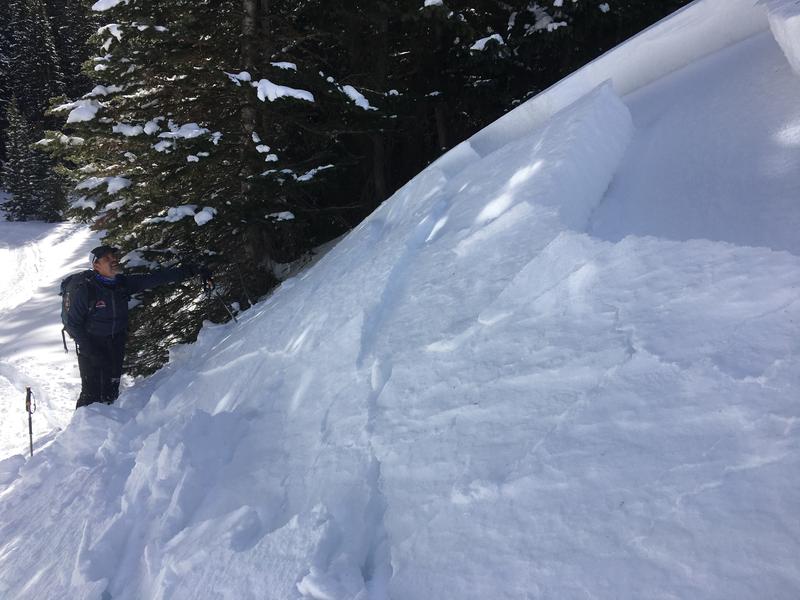
Test slope (east aspect) that produced a soft slab at the new snow/old snow interface.
Southerly winds on 1/27/2021 have cross-loaded many slopes above treeline on west, north, and east aspects.
East aspect near treeline with 100 cm snow depth with a moderately dense slab (4F to 1F hardness) overlying weak basal facets (F hardness) above the October and November crusts.
Colorado Bowl with crown and flank remnants in red. Much of this slope appeared to have filled back in after it probably ran on 1/24/201.
